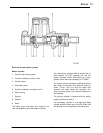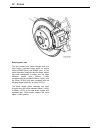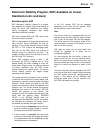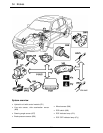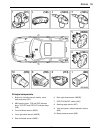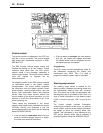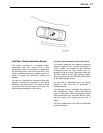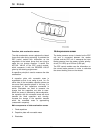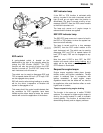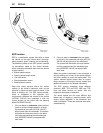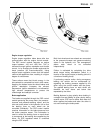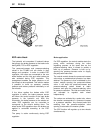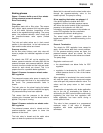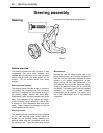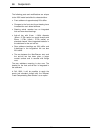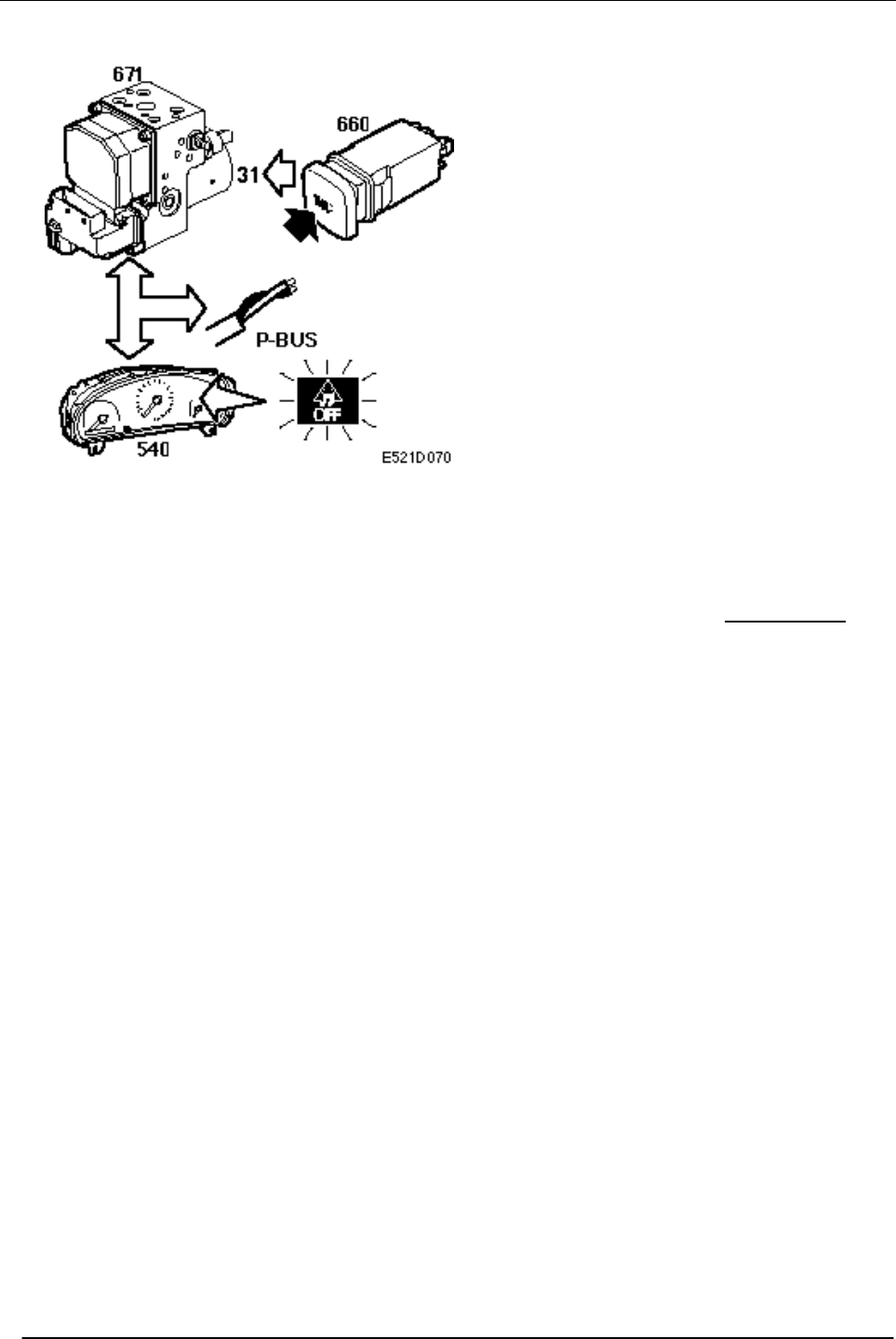
Brakes 59
9-5
ESP switch
A spring-loaded switch is located on the
dashboard to the right of the steering wheel for
turning the ESP function ON/OFF. The TCS
function will also be turned off when the ESP
function is turned off. The ESP OFF lamp in the
main instrument unit will come on.
The switch can be used to disengage ESP and
TCS at speeds below 60 km/h (37.5 mph). ESP
can be engaged at any speed.
ESP will remain active during braking as a safety
aid for the driver, irrespective of whether the
system is disengaged or not.
This means that if the control module detects that
the conditions for ESP regulation have been
fulfilled and the driver starts to brake, the control
module will control the application of the brakes.
ESP indicator lamp
If the ESP or TCS function is activated while
driving, a symbol in the main instrument unit will
light up and go out again when the function is
deactivated. The lamp is turned on/off by a bus
message (ON/OFF) from the ESP control module
to the main instrument unit.
The lamp only comes on if engine torque is
reduced and the brakes are applied.
ESP OFF indicator lamp
The ESP OFF lamp comes on in case of a fault in
the ESP or TCS system, or when the system has
been turned off manually.
The lamp is turned on/off by a bus message
(ON/OFF) from the ESP control module to the
main instrument unit. The switch can be used to
disengage ESP and TCS at speeds below 60
km/h (37.5 mph). ESP can be engaged at any
speed.
Note that even if ESP is shut OFF, the ESP
function will remain active during braking as a
safety aid for the driver, even though the ESP
OFF indicator is illuminated.
Request for engine torque
Engine torque regulation takes place through
throttle control and ignition retardation. Throttle
control is relatively slow in comparison with
ignition retardation. A rapid engine torque
regulation means that the brake will not have to
be applied as often and therefore offers a much
higher level of comfort.
Torque request during engine braking
The function is the same as in earlier TC/ABS
systems. The request for higher engine torque is
sent by the control module in order to maintain
course stability. The function is activated when
downshifting severely and on slippery surfaces.



